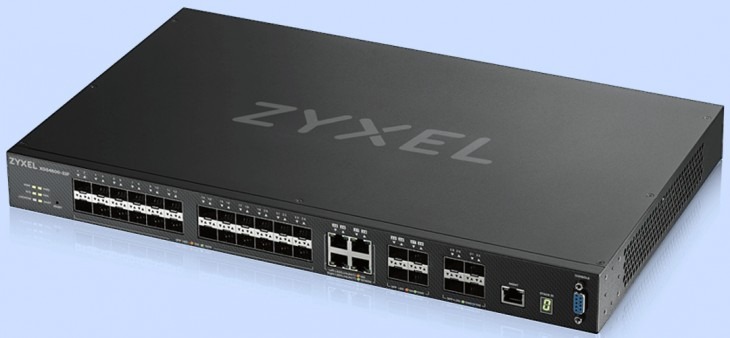
Most businesses these days have some sort of structured cabling solution. This uses standard twisted pair cabling to connect all of the networking devices in the building, so that computers and phones can share the same cables, making it easy to move things around to suit changing requirements.
Using PoE Switches can help companies improve, grow and maintain their networks – PoE – Power Over Ethernet Switches And Hubs
What is a PoE Switch?
A switch is a device that allows devices on a network to communicate. A PoE switch has the Power over Ethernet functionality built into it. This means you can power devices using network cables.
A PoE switch provides power that can be used to run other devices via the Ethernet cabling. If your network has distributed switches, it’s also possible to get PoE pass-through switches. These are themselves powered by PoE from a central source but can also pass power on to endpoint devices such as cameras or phones.
What Is PoE?
One of the other advantages of structured cabling is that it can be used to transmit electric power using Power-over-Ethernet (PoE) technology. PoE is useful for devices such as wireless network repeaters or IP security cameras as they are often mounted high on walls or on ceilings far away from the nearest power socket. Using PoE means that they can use a single Ethernet cable for voice, data and power.
Of course, using PoE simplifies the installation of devices, together with reducing the associated costs. There is no need to run extra cables or install additional power sockets. PoE uses lower than mains voltage, so it’s safe to use, although it can still damage equipment not designed to use it, so installation needs to be carried out carefully.
Here are some key features of a PoE switch:
- Power over Ethernet (PoE) Capability: A PoE switch can provide power to PoE-enabled devices through the Ethernet cable, eliminating the need for separate power cables.
- Multiple Ports: PoE switches typically have multiple Ethernet ports, allowing multiple devices to be connected to the network.
- Power Management: PoE switches have built-in power management features, enabling them to automatically detect the power needs of connected devices and allocate power accordingly.
- VLAN Support: PoE switches can support virtual LANs (VLANs), which allow network administrators to segment the network into multiple smaller networks, improving network performance and security.
- Quality of Service (QoS): PoE switches can prioritize network traffic and allocate bandwidth based on the importance of the traffic, ensuring that critical applications receive the necessary network resources.
- Manageability: PoE switches can be managed through a web-based interface, allowing network administrators to monitor and configure the switch remotely.
- Power Budget: PoE switches have a maximum power budget, which limits the amount of power that can be delivered to connected devices. This is an important consideration when choosing a PoE switch, as it determines the number and type of devices that can be connected to the switch.
With Power over Ethernet switches in place, a single cable will send both data signals and electrical power to a range of terminals. Only one connection is required for installing devices, such as:
What Devices Use A PoE Switch?
Many devices can be powered by PoE. However, the amount of power needed can differ.
Low Watt PoE devices
- VoiP and Video Phones
- IP cameras
- Wireless Access Points
- Audio Devices
- Remote Computer Terminals and Thin Clients
High Watt PoE devices
- TVs
- Computer Monitors
- Laptops
When Should You Use PoE Switches?
If you have just one or two PoE devices, they can be powered using injectors. These are small devices that plug into a power source and sit between the Ethernet switch and the device to be powered. They provide power to the IEEE 802.3af standard.
Where there are lots of PoE devices, if you use VoIP phones, for example, using individual injectors becomes cumbersome and complicated. Most normal switches don’t support PoE, so you can’t use injectors to provide power before the switch.
However, there is a solution.
Most PoE switches offer a mix of both powered and non-powered ports so that they can be used in your general network.
More sophisticated models such as those offered by Netgear offer auto-sensing. This detects when a PoE device is present on a port and provides power to it, but turns it off for non-PoE devices. This ensures that you can safely connect any device to any port without the risk of causing damage to your equipment.
Do PoE Switches Have Any Limitations?
Most PoE switches have limited power, so you can only power smaller devices. Powering larger objects requires more powerful switches, which can be very expensive.
The electric power needed to run these PoE devices is often more expensive than running them through a wall. This means PoE switches should only be used when running two cables is a problem.
One final consideration is if the switch is powering multiple devices and stops running for any reason, all devices connected to it will lose power.
What Are The Benefits Of PoE Switches?
PoE switches have some great benefits. As they cover both network and power, you will only need one cable for each device, rather than two. This helps when you have limited space to run cables, or your office already has too many cables to organise neatly.
PoE is also great for expanding a network where power is an issue. For example, if you want to create a bank of computers in a part of the room with limited power sockets.
PoE switches are also easier to maintain and review. They can be monitored remotely and even completely shut down during downtime.
As they do not need wiring, you do not need to hire an electrician to install them. With a little bit of research, you can be up and running in no time at all.
Comms Express’s Top PoE Switches
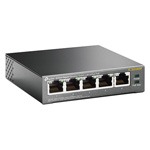 TP-Link 5-Port Gigabit Switch TP-Link 5-Port Gigabit Switch |
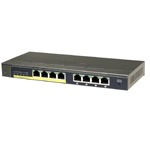 Netgear 8-Port Switch Netgear 8-Port Switch |
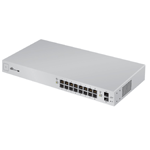 Ubiquiti UniFiSwitch 16-Port PoE+ Switch Ubiquiti UniFiSwitch 16-Port PoE+ Switch |
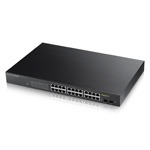
|
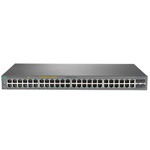
|
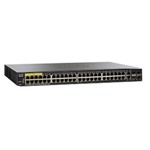
|
